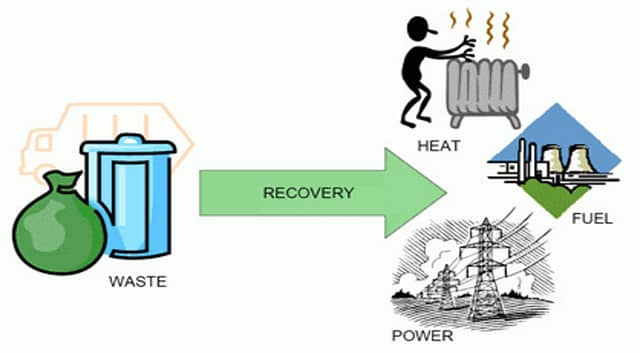
"Waste to Wonder: Embracing Innovation in Recycling for a Greener Tomorrow! "
In the battle against mounting environmental challenges, recycling has emerged as a powerful tool to mitigate our impact on the planet. Recycling traditional materials like paper, glass, and plastic has long been a part of our waste management strategy. However, as technology advances, so does our ability to tackle more complex waste streams and find innovative ways to transform waste into valuable resources. In this creative and long read article, we delve into the world of cutting-edge recycling technologies that are revolutionizing the way we view waste, paving the path towards a sustainable and resourceful future.
1.Advanced Plastic Recycling
Plastic waste has become one of the most pressing environmental concerns, with tons of it ending up in landfills and oceans each year. Innovative plastic recycling technologies are now offering hope in addressing this crisis. One such technology is chemical recycling, which breaks down plastic into its molecular components, allowing for the creation of virgin-quality plastics or other valuable materials. By using chemical recycling, even hard-to-recycle plastics like multilayered packaging and mixed plastics can be converted into useful resources.
Moreover, researchers are exploring the potential of plastic-eating enzymes and bacteria that can digest plastic waste and convert it into biodegradable substances. These biological recycling solutions hold the promise of significantly reducing plastic pollution and promoting a circular economy for this versatile yet harmful material.
2.Waste-to-Energy Conversion
While recycling materials like paper and metal is essential, some waste streams are challenging to recycle conventionally. Waste-to-energy conversion technologies offer an alternative approach to deal with non-recyclable waste, such as organic and municipal solid waste. Through processes like incineration, gasification, and pyrolysis, these technologies transform waste into heat and electricity, effectively generating clean and renewable energy.
Moreover, waste-to-energy facilities often incorporate advanced emission control systems, ensuring that harmful pollutants are minimized, making them more environmentally friendly than traditional waste incineration. By harnessing the energy potential of waste, these technologies not only reduce the burden on landfills but also contribute to sustainable energy production.
3.E-Waste Recycling Innovations
The rapid pace of technological advancement has resulted in a mounting e-waste problem. Discarded electronic devices contain valuable and often rare materials that can be recovered and reused. Innovative e-waste recycling technologies employ sophisticated processes to extract precious metals like gold, silver, and platinum from electronic waste. Additionally, these technologies separate hazardous materials like lead, mercury, and cadmium for safe disposal.
Beyond material recovery, some companies are exploring ways to refurbish and repair electronic devices, extending their lifespan and reducing the need for new gadgets. Furthermore, educational initiatives on responsible e-waste recycling encourage consumers to participate in proper e-waste disposal, further closing the loop on electronic product lifecycles.
4.Upcycling and Creative Reuse
Upcycling is a creative and artistic approach to recycling that involves transforming waste materials into new products of higher value. Unlike traditional recycling, which often downgrades the quality of materials, upcycling gives waste a new lease of life in imaginative and inventive ways. From transforming discarded textiles into trendy fashion pieces to crafting furniture from reclaimed wood, upcycling celebrates innovation and sustainability simultaneously.
Creative reuse projects and makerspaces are becoming more popular, encouraging communities to come together and explore innovative ways to give new purpose to old items. These initiatives not only reduce waste but also stimulate creativity and foster a sense of pride in transforming waste into something beautiful and functional.
5.The Promise of Nanotechnology
Nanotechnology, the manipulation of matter on a molecular or atomic scale, holds great promise in the field of recycling. Researchers are exploring how nanotechnology can enhance traditional recycling processes, making them more efficient and cost-effective. For instance, using nanomaterials as catalysts can accelerate chemical reactions, reducing the energy and resources required for recycling.
Additionally, nanotechnology is being explored to create “smart materials” that can self-heal or regenerate, extending the lifespan of products and reducing the frequency of disposal. As this field continues to advance, nanotechnology may become a game-changer in revolutionizing recycling processes and transforming waste management.
In our journey towards a sustainable future, embracing innovative recycling technologies is crucial to turn waste into valuable resources. From advanced plastic recycling and waste-to-energy conversion to creative upcycling and the potential of nanotechnology, each innovation plays a vital role in reshaping our relationship with waste.
As technology continues to advance, we must support research and development in recycling technologies, while also encouraging responsible consumption and waste reduction at the individual and community levels. By fostering a culture of recycling and embracing creative solutions, we can usher in a world where waste is no longer discarded, but transformed into a valuable resource that enriches both our lives and the health of our planet. The path to a greener future lies in our hands, and through the power of innovation and collective action, we can pave the way to a more sustainable and resourceful world for generations to come.
- Kaumodaki Lonkar

